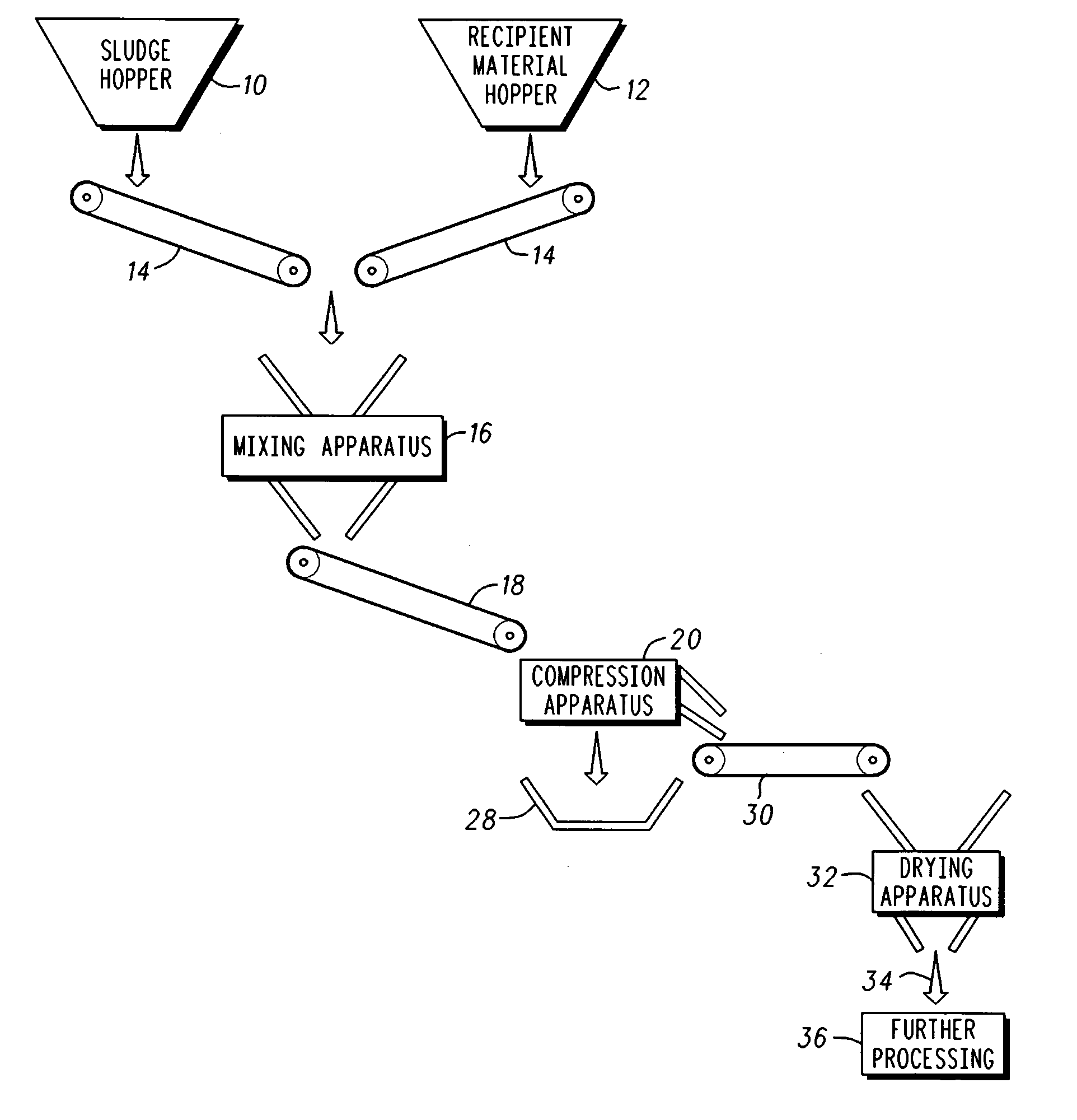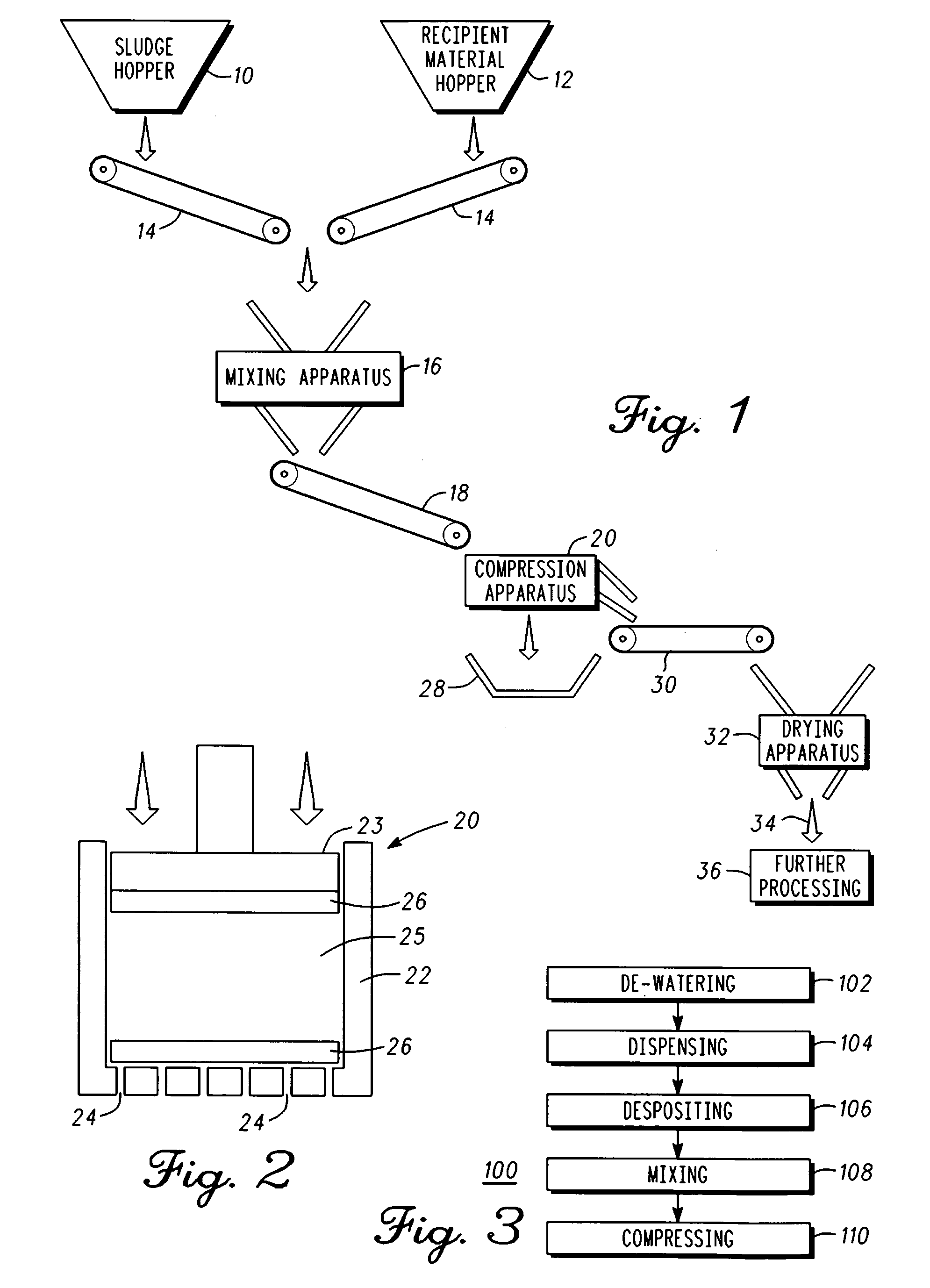Waste treatment system
a technology of waste treatment and waste, applied in the nature of treatment water, separation process, lighting and heating apparatus, etc., can solve the problems of difficult to effectively eliminate the moisture content of sludge beyond a certain level, and the sludge cake retains a substantial portion of moisture, and conventional techniques are only capable of eliminating that level of moistur
- Summary
- Abstract
- Description
- Claims
- Application Information
AI Technical Summary
Benefits of technology
Problems solved by technology
Method used
Image
Examples
example one
[0062]The following table shows the weight reduction produced in a small bench scale experiment for a number of different mixtures. A chamber which was twelve inches deep and had a six inch diameter was filled with 4, 6 and 8 inches of sludge and the indicated mixture. The chamber had a series of holes on the floor spaced about one centimeter apart in a series of decreasing circular arrangements. The about 40 holes had about a five millimeter diameter. A filter was placed adjacent to the floor and comprised a conventional porous belt. A like sized circular piston with a substantially flat and circular end was used to apply a downward pressure toward the floor of the chamber for about 30 to 60 seconds. The initial pressure was about 200 psi and final pressure was about 1000 psi. It was observed that most of the water escaped through the holes upon the initial downward pressure, and thereafter additional water exited the chamber. In more detail, a large amount of wastewater was expell...
example two
[0063]In a preferred embodiment, good results were achieved in the following manner. A sewage sludge sample of undigested sludge cake with a moisure level of 87% was mixed at a rate of 18% with a dry MDF wood dust. The mix was placed in the dewatering device at a depth of 5 inches (125 mm). The following results were obtained from three batches of the above mix.
[0064]Batch 1 was compressed at a pressure of 250 pounds per square inch (psi). The additive was separated from the compressed sludgecake afterwards. The moisure content of the compressed sludgecake was 44.6% moisure. This was a decrease of about 42.4 points of moisure.
[0065]Batch 2 was compressed at a pressure of 500 psi. The additive was separated from the compressed sludgecake afterwards. The moisure content of the compressed sludgecake was 36.03% moisure. This was a decrease of about 50.97 points of moisure.
[0066]Batch 3 was compressed at a pressure of 1000 psi. The additive was separated from the compressed sludgecake af...
PUM
| Property | Measurement | Unit |
|---|---|---|
| pressures | aaaaa | aaaaa |
| pressures | aaaaa | aaaaa |
| depth | aaaaa | aaaaa |
Abstract
Description
Claims
Application Information
 Login to View More
Login to View More - R&D
- Intellectual Property
- Life Sciences
- Materials
- Tech Scout
- Unparalleled Data Quality
- Higher Quality Content
- 60% Fewer Hallucinations
Browse by: Latest US Patents, China's latest patents, Technical Efficacy Thesaurus, Application Domain, Technology Topic, Popular Technical Reports.
© 2025 PatSnap. All rights reserved.Legal|Privacy policy|Modern Slavery Act Transparency Statement|Sitemap|About US| Contact US: help@patsnap.com


